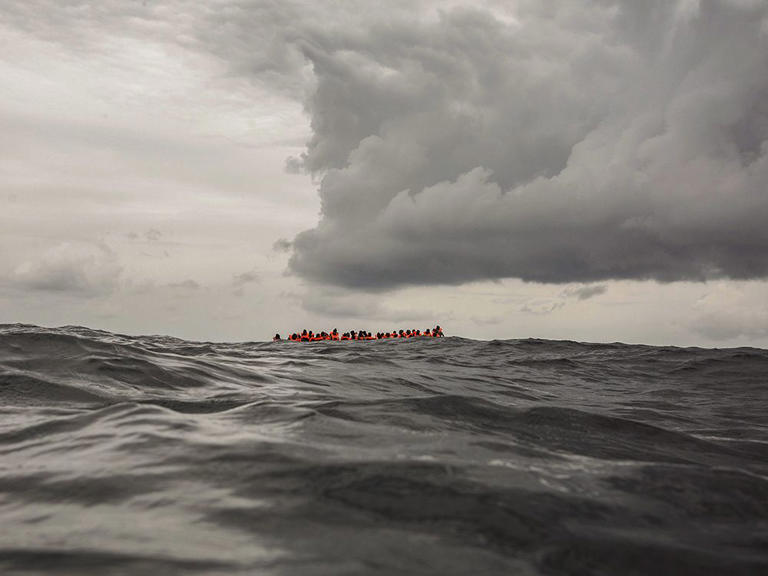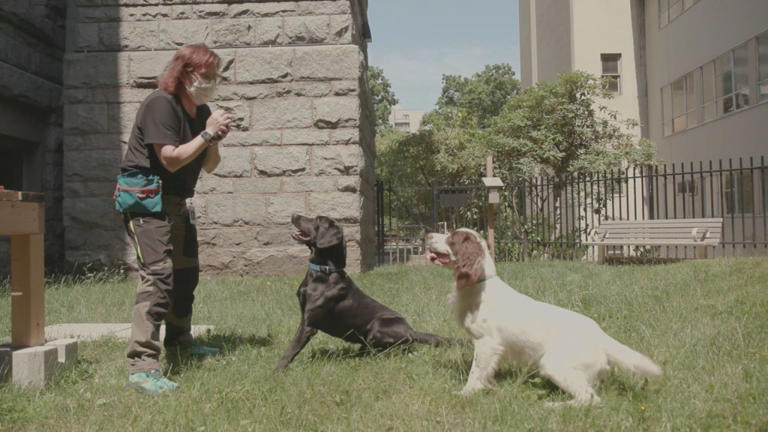Story by The Canadian Press •8h

OTTAWA — Recent statements by the CEO of a major oilsands company further the case for federal regulations to cap greenhouse-gas emissions in the oil and gas sector, Environment Minister Steven Guilbeault said.
In an interview with The Canadian Press, Guilbeault called the Aug. 15 comments by Suncor CEO Rich Kruger "disappointing," particularly in the middle of a summer when "tens of thousands of Canadians" were forced to flee wildfires and global temperatures hit record highs in July.
"To see the leader of a great Canadian company say that he is basically disengaging from climate change and sustainability, that he's going to focus on short-term profit, it's all the wrong answers," Guilbeault said.
"If I was convinced before that we needed to do regulation, I am even more convinced now."
This fall, Guilbeault intends to publish draft regulations to cap emissions from oil and gas production and then force them downward over time. Oil and gas contributed 28 per cent of Canada's total emissions in 2021, and the oilsands alone account for 13 per cent.
Suncor contributed 17.4 million tonnes, or 2.5 per cent of the national total. Suncor's emissions in 2021 were 50 per cent higher than they were in 2011. Canada's total emissions have fallen six per cent compared with 10 years ago.
Guilbeault hasn't yet said exactly what the first cap will be, but the Emissions Reduction Plan published in 2022 included a cut of more than 40 per cent to oil and gas emissions by 2030.
Kruger, who only took over as Suncor CEO in April, told investors during Suncor's second-quarter results conference call that the company had a "disproportionate" focus on the longer-term energy transition to low-emitting and renewable fuels.
"Where we stand is we judge that our current strategic framework ... is insufficient in terms of what it takes to win," he said, according to a transcript of the call posted on the company's website.
That included, he said, a "lack of emphasis on today's business drivers."
"Today, we win by creating value through our large integrated asset base underpinned by oilsands," he said.
He promised a "revised direction and tone" focused more on the immediate financial opportunities in the oilsands.
In that same call, Suncor reported second-quarter earnings of $1.9 billion, down from $4 billion in the second quarter of 2022, when oil prices soared following Russia's invasion in Ukraine.
Kruger said the company remained committed to the Pathways Alliance, a consortium of six oilsands companies working together to install carbon-capture technology and reach net-zero emissions by 2050.
Net-zero is the term used to describe a situation where any remaining greenhouse-gas emissions produced are captured by technology or nature. Carbon capture is an emerging technology that traps emissions and funnels them back underground.
Pathways executives have long said that they want to contribute to Canada's climate targets, but that the federal timeline for cutting their emissions was unrealistic.
Both Suncor and Pathways have been approached for comment for this story but neither have yet responded.
Kruger's comments come almost a year after his company announced it would sell off its wind and solar power assets, ending its two-decade long foray into the renewable energy business. Earlier this year, Suncor expanded its oilsands operations when it bought the Fort Hills oilsands mine from Teck Resources and TotalEnergies.
Guilbeault said the federal government isn't asking the oil and gas sector to do more than its fair share, and is not singling it out. He noted zero-emission vehicle regulations being finalized now require one in five new vehicles sold to be electric by 2026, and bar the sale of new combustion engine cars and trucks in 2035.
Draft regulations to eliminate emissions from Canada's electricity sector were published earlier in August and are still in the comment period.
The oil and gas cap regulations were expected already, but Guilbeault acknowledged they have been delayed.
"It is a complex piece of regulation," he said.
But the minister said they are coming, and industry has to do its part.
"I don’t think in 2023 you can be a good corporate citizen and not play your role," he said.
This report by The Canadian Press was first published Aug. 29, 2023.
Mia Rabson, The Canadian Press














